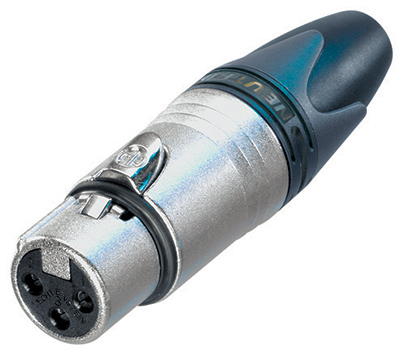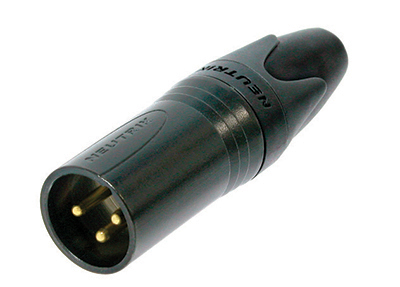Connector Contacts: Gold, Silver and Tin

MARY GRUSZKA
Connector pins don’t seem to get the kind of attention that they should deserve. And that’s actually understandable to a certain degree since most of the time connections just work. It’s not until there’s a problem that connector contacts might be considered as a source of an intermittent, noisy or lost signal.
PREVENTING CORROSION
In real world situations connectors don’t work in a vacuum. Connections are made in all sorts of conditions, extreme heat or cold, damp, humid and downright wet conditions, in the salty air of a seashore remote or alongside a wintry highway, or in such places as water sport venues with their higher concentrations of chlorine. These kinds of conditions are ideal for promoting corrosive activity in connectors.
When two different metals come in contact with each other in the presence of an electrolyte, galvanic corrosion can occur. Water by itself is a weak electrolyte, but becomes a much stronger conductor if it contains dissolved salts. A connector doesn’t have to be soaking in water, although being out in the rain or snow certainly doesn’t help. Moisture can form from condensation, be picked up through contact with damp soil, or through the atmosphere where humidity, pollution, or the presence of certain gases like chlorine can be problematic.
In galvanic corrosion, oxygen is reduced in the more electrically positive contact and reacts with the metal of the more negative contact, forming metallic oxides on that contact. These oxides have a higher contact resistance than the metals themselves, causing a reduction in signal flow. In the worst case, oxides can build-up sufficiently to form an insulator blocking signal flow entirely.


Neutrik XX-Series XLR connectors, femaie (L) and maie
The process called fretting can also promote contact corrosion. Fretting means very small motions at the connection point that can be produced by such factors as mechanical vibrations or by expansion and contraction of the contacts as the temperature changes. The fretting action wears down the contact surfaces over time, leaving the exposed metal more susceptible to oxidation.
GO FOR THE GOLD
What can be done to prevent or minimize these problems?
Obviously, one should protect connections from the elements as best as possible to keep out water, moisture and debris.
Since galvanic corrosion involves dissimilar metals, don’t mate connectors with different metallic contacts. Where you have control over the type of connectors you use or specify in equipment, it’s a good idea to choose a house standard and stay with it.
Another good idea is to choose a plating metal that is inherently corrosion resistant. And that leads to gold. Gold is an excellent conductor that is also highly reliable and durable. It doesn’t react with oxygen to form an oxide, and isn’t susceptible to fretting action. Gold is resistant to environmental conditions like pollution, humidity, or corrosive gases, and holds up well in higher temperatures. It’s a good choice for low-level signals, but not so good if electrical arcs can form between gold contacts since this action can wear away at the gold surface.
On the downside, gold has gotten quite expensive. But the investment could be worth it over the long term with reduced connector problems.
One caveat: Don’t mate gold with tin as it is subject to fretting corrosion. As the connection is made, the tin tends to transfer to the gold pins, eventually forming a tin oxide layer on the gold. This layer can build up fairly quickly and because of the durable nature of the gold, is resistant to cracking and rubbing off.
Tin or tin alloy connections to each other can be a cost-effective choice. Although tin connections are subject to oxidation from fretting, the mechanical action of making contact can put cracks in the oxide layer allowing the signal to get through via the softer metal underneath the oxide. This is why it’s advisable to use connectors that create a wiping action when the connection is made.
Tin, however, is not good for high temperature environments.
Silver has good potential as a contact material for signal use and seems to be getting more attention as a less expensive alternative to gold. Of any metal, silver is the best conductor, and by itself isn’t prone to fretting in normal conditions.
Silver will mate pretty well with tin and also with gold, as either combination has a low ranking for galvanic corrosion. Fretting can still be an issue with a silver-tin connection and some of the research indicates that it’s not a good combination for harsher environments. But it does seem to have a better performance than a tin-gold connection.
On the downside, silver will tarnish, although not all tarnishes will affect performance. A wiping action upon making contact can be effective in reducing the amount of tarnish. However silver-plated contacts would not be a good choice in tough environments with high pollution, chemicals, salts or gases, nor in areas with high in humidity and moisture. All of these factors can contribute to high levels of tarnishing and increased contact resistance.
Silver has a high coefficient of friction, meaning it takes a higher force to pull connections apart which could wear out the contact surface quicker. This, added to its poor durability, would indicate that silver connections would be more appropriate for applications that call for infrequent connects and disconnects.
I hope that this brief summary of key properties of different plating metals used in connector contacts will help make one more aware of their role in assuring a good, solid, trouble-free connection.
Get the TV Tech Newsletter
The professional video industry's #1 source for news, trends and product and tech information. Sign up below.
